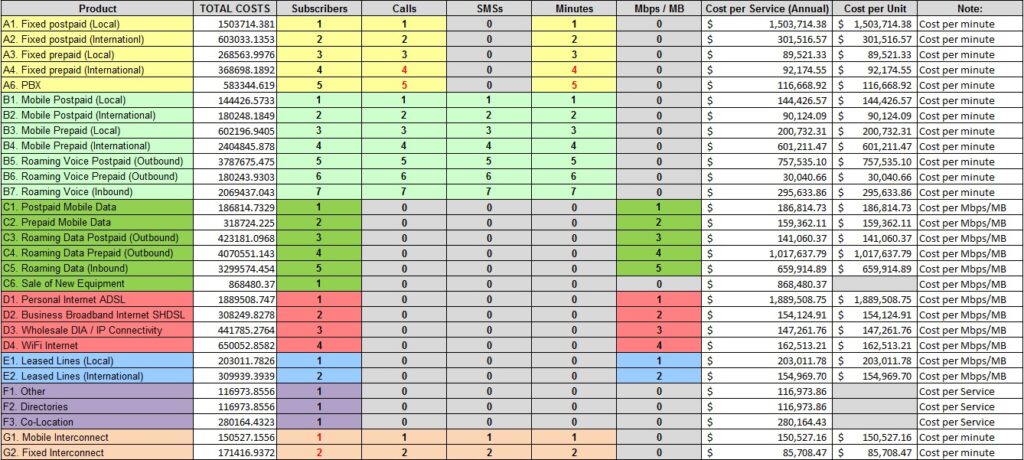Telecom cost modelling is a fairly complex undertaking which requires understanding of both financial and technical components of the telecom business.
At Parcus Group, Telecom Product Cost Models are developed by our in-house team of multi-disciplinary experts and are tailored to the requirements of each telecom operator or telecom regulator individually.
Our team has developed models for carriers and telecom regulators all over the world including a range of different size organisations as well as product sets covering mobile, data, fixed line, internet, cable TV, managed services, satellite and other products.
Parcus team frequently presents at global and regional telecom conferences – an example of Cost Modelling presentation given at PITA Telecom Conference can be found at this SlideShare link as well as our Blog Pages.

In terms of our approach we bring together best global practices for cost models development and we can develop Fully Allocated Cost Models (FAC), Long Run Incremental Cost Models (LRIC), Total Service Long Run Incremental Cost (TSLRIC+), Bottom-Up (BU), Building Block Model (BBM), Top-Down (TD) Cost Models, Hybrid Cost Models and others as required.
For example, following are high level steps we take during creation of Fully Allocated Product Cost Models.
1. Gather financial data from revenue & cost General Ledgers (GLs)
- Develop a dictionaries for data capture covering
- Product (Marketing) and GL (Finance) alignment
- Product Portfolio Allocation Tables
- Network Platforms Dictionary for allocations
- Types of activities eg. departments, labour etc. mainly for survey activity based labour cost capture
2. Gather all the required data and populate dictionaries
- Develop allocations methodology covering several levels:
- Platforms usage (based on engineering traffic usage stats)
- Platform type (eg. depreciation based on line-by-line data checks of all cost items)
- Staff based on timesheet or survey approach
- Number of services by product (SIO) approach
- Revenue and costs weighted average approach
3. Model development and allocations rules:
- Where possible allocate costs direct to products (eg. Residential Internet)
- Where not possible allocate to product family (eg. Data products family)
- Where not possible allocate to platform (eg. Fibre, ADSL….)
4. Review and Verification: Aim is to get as much into direct cost. So allocations will be done from that point only for cost where direct product attribution is not possible. Target for the final model, indirectly allocated costs will comprise <25% of total costs.
For more information on how to develop product cost models for your telecom organisation or if you require assistance please contact us.